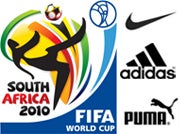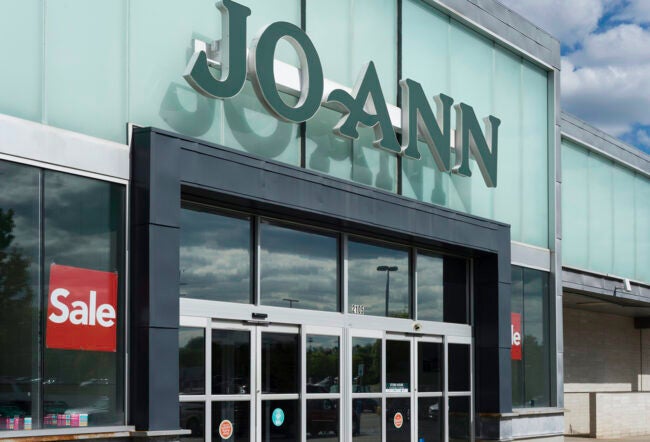Beginning on June 11, 32 football (also known as soccer) teams will duke it out in one of the most widely viewed sports events on the planet – the International Federation of Football (FIFA) World Cup. While the teams competing in South Africa will try to earn their respective countries the title of “best in the world,” a separate game will be playing out on the commercial battlefield. Extraordinary global interest has made the World Cup a key testing ground for corporate sponsors, especially the sports-related brands that invest significantly in the event and its participating athletes. The month-long tournament is a chance for the companies to see if they are competing with a winning strategy.
“We know that it is the most important football tournament on the planet, and that it defines the meaning of competition in sports,” writes sports marketing consultant Gerardo Molina in his report, “The Football World Cup of 2010: Destination South Africa.” “At the same time, it is an economic and financial battle that involves making numerous investments in the brands that will be worn by the different teams. [The brands] are searching for popularity and recognition in order to raise consumption and sales at an exponential rate.” Molina identifies three manufacturers of sports clothing as brands to watch — Adidas, Nike and Puma. Puma comes into the tournament as a sponsor for the Italian team, the defending World Cup champion.
“The leading managers of clothing companies realize that it is a very profitable investment to pay exorbitant sums of money [for World Cup sponsorships],” according to Molina “Especially if you realize that about five billion viewers [around the world] will usually be following the event … Without doubt, it is a gold mine.”
Adidas is the only sports brand on this year’s shorter list of elite FIFA sponsors, who are known as “partners.” Partners are guaranteed exposure in the tournament stadium, inclusion in all official publications such as programs and on FIFA’s website. The companies, which include Adidas, Coca-Cola, Dubai-based Emirates airlines, Hyundai-Kia Motors, Sony and Visa, also get direct advertising and promotional opportunities and preferential access to TV advertising. The companies are committed to paying a minimum of between 100 and 200 million euros through 2014, according to an agreement reached in 2007 after the last World Cup. The companies on the list of corporate sponsors, the category below that of “partner,” include Continental Airlines, McDonalds and Budweiser, which will collectively invest about 50 million euros in order to retain that status through 2014.
Adidas will outfit and supply gear to 12 national teams including Spain, Argentina, Germany and France. Nike will is working with nine teams, and Puma will supply six. Adidas’ status as an elite sponsor gives it a leg up in terms of reaching the public, notes Fernando Vázquez, director of Gerardo Molina & Associates. “[Adidas] has the ideal fortune that the inaugural game is between two teams that Adidas sponsors – host [team] South Africa and Mexico.” With these two teams alone, Adidas has sponsorship contracts covering four years, valued at a total of $110 million.
According to the Molina report, Adidas, Nike and Puma are each counting on “having a team in six of the eight groups of the first round [of the competition]. In addition, they will clothe [other] soccer teams that, from a sports point of view, are considered the leading teams on the ‘second level’ of the sport. So everything seems to indicate that one of these [three] brands, barring a sports surprise, will be [worn by] the new champion.” Adidas will clothe not only a larger number of teams than its competitors, but will also dress more umpires, more field judges and even more of the volunteers who help out at the games. The Adidas insignia will also be imprinted on the official ball used in World Cup games.
Adidas is the leading brand in the world when it comes to sales of football-related clothing and gear. In the broader environment of global sports, however, Nike reigns as king of the market. In addition, other companies are fighting it out to link their brands to a team, partnerships that often reap benefits beyond the revenue streams derived directly from sales of uniforms and equipment. According to Antonio Martín, director of the master’s program in sports management at the IE Business School, “the profitability is over the medium and long term, and you achieve it by generating an emotional connection between the sponsored team, the public and the brand. In addition, the key is how you activate [that connection]. That is to say, all the activities that you engage in to communicate that sponsorship. [Brands] need to find ways to involve themselves more with the public.”
Nike considers the Brazilian team a major weapon in its World Cup marketing efforts. The company’s contract with the team expires this year, and Nike hopes to profit if Brazil wins the world title. The Brazilian national team is the most successful in the history of the World Cup, with five titles. Nike’s other key sponsorship is the Portuguese team, which placed fourth in the last World Cup in 2006. In addition, Portugal boasts star player Cristiano Ronaldo, one of the biggest media stars in the world of global sports. “[Nike] will [also] be worn on the chest of the Dutch and Portuguese teams, who promise to be leading players in the battle for the title,” explains Vázquez in the report. “That guarantees [the company] a high level of visibility for millions of people around the globe.”
Four years ago, Puma-sponsored Italy defeated Adidas-sponsored France to earn the World Cup title. It was an ironic twist, given that the two German firms were established by a pair of brothers, Adolf and Rudolf Dassler, whose disputes wound up turning the brands into rivals. Although Puma boasts current world champion Italy, the brand’s insignia will be displayed on half as many teams as Adidas in this year’s tournament. According to the Molina report, Puma’s strategy has been to continue to sponsor the Italian team, paying 17 million euros a year for that right. The company’s other line of attack is in Africa where it dresses the teams of Cameroon, Ghana and the Ivory Coast. Uruguay and Switzerland players will also wear Puma garb.
The rest of the World Up pie will be divided up between five other sports brands. One such firm, London-based Umbro, has pinned all of its hopes on the English team, for which it is paying an annual sponsorship fee of US$50 million. For US$2 million a year, Spain’s Joma brand will sponsor Honduras. Meanwhile, China’s [Hongxing] Erke Group will provide equipment for the North Korean team at a cost of US$7 million a year. Le Coq Sportif, a French brand, will dress Algeria, and Chile’s Brooks is sponsoring that country’s national team.
Picking Winners On and Off the Field
But how well the teams fare on the field has major consequences for which brand will score a marketing triumph. If favored Spain wins the tournament, for example there would be direct consequences for sponsor Adidas. When Spain won the 2008 European Cup championship for example, it “enabled sales of Adidas’ football accessories to reach 1.3 billion euros, a figure that we will exceed this year at the World Cup of South Africa,” Adidas CEO Herbert Hainer said in a recent interview in Expansion, a Spanish economic daily. According to forecasts, if the Spanish football team were to win the World Cup, Adidas’ sales in the domestic Spanish market would grow by 8%, which would mean an overall 50% growth in Adidas’ sales from previous forecasts for this year.
Although most national teams usually keep the same sports brand sponsors over the medium and long term, results have a decisive influence on the renegotiation of contracts, and on whether a sponsoring firm invests more money into a particular team. After all is said and done, notes Martín, “success in sports is measured by results [on the playing field], just as in the case of corporations. [But] there are some teams that, because of their history, the economic potential of their country, the role that football plays in their society, and all sorts of other factors wind up obtaining more valuable sponsorships, or obtain sponsorships more easily, than other teams.”
Spain’s status as one of the favorites to win the World Cup is also reflected in the economic valuation of its national team. According to Euromericas Sport Marketing and Gerardo Molina & Associates, the Spanish team is the most valuable team in the tournament, with an estimated value of 565 million euros. These rankings calculate the market worth in terms of the economic rights, or contract value, of the 25 players who have played most frequently for their teams during the qualifying round of the World Cup. In the case of the Spanish squad, the calculation includes many valuable players, not only from Spanish football leagues but from other countries, including Fernando Torres and Cesc Fábregas, whose teams play in England’s Football League.
After Spain, the second team in the valuation rankings is Brazil, with an estimated value of 515 million euros, according to FIFA. France ranks third, with an estimated value of 450 million euros, followed by England, worth 440 million euros. Argentina is the sixth most valuable team, worth 390 million euros, but ninth greatest power in football based on rankings, according to FIFA. For its part, host South Africa’s team is worth 35 million euros.
Spreading the Wealth
According to the report known as FIFA Finances 2009, the 2010 World Cup of South Africa has already significantly increased the profits of the organization, which earned net profits of US$196 million in 2009. When it comes to revenues related to events, FIFA took in US$1.022 billion, while spending US$456 million on such events. Most of this sum involves television marketing rights. For example, FIFA took in US$650 million by selling rights to broadcast the tournament.
Aside from the fact that the winning team will be crowned best in the world, the 2010 World Cup will provide US$420 million to the national teams participating in the tournament and the football league teams that funnel players to those competitors. This total is 61% higher than the US$261 million paid out during the previous World Cup. Of this total, US$30 million will go to the 2010 championship team. Those teams that reach only the first round of the competition will still receive $8 million each. In addition, each participating football association gets US$1 million to help pay for its preparation costs. Taking into account the number of teams and players, and the duration of the tournament, a total of US$1,600 will be contributed per player per day in terms of added value.
For FIFA, the fact that the World Cup is taking place in Africa has been a determining factor in its efforts to evaluate whether all the expenses and investments devoted to this event wind up providing significant social and economic benefits, rather than financial losses, for the region. “Part of the investments made in the sponsorships is going to the [host] country [South Africa],” Martin says. “For example, the sponsors … are bringing in hundreds, even thousands, of guests who will spend money in the country. For some of them, it will be an opportunity to do business [in South Africa], and they may later decide to remain there if they find the economic climate favorable.” Martin adds that, once the World Cup is over, those companies can take advantage of the improvements to South Africa’s infrastructure made for the World Cup competition. South African officials can also “capitalize on the media exposure that the country has received [from the event]. They can help companies set up there, and can bring in more tourists [as a result of the World Cup].”


